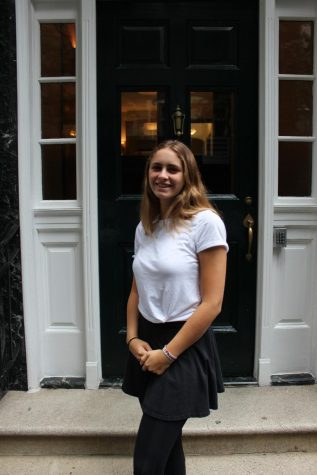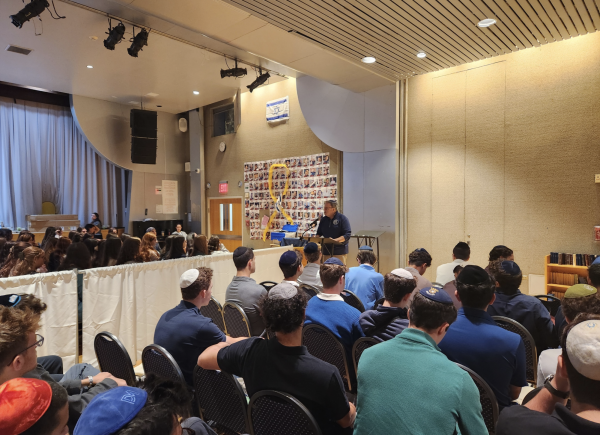Freshman Class Size-Yay or Nay?

Every year, the upperclassmen anxiously await meeting the new freshmen class. However, this year, there were noticeably fewer ninth graders roaming around– which, to most, simply meant fewer new faces to meet. According to the admissions office, the incoming freshmen classes from 2013 through 2017 ranged from 92 to 103 students, with an average size of 98 students. This year’s class consists of only 85 students, distinctly less than the norm. In addition, the 85 students come from a pool of only 89 applicants who were accepted to Ramaz. There are 45 rising ninth graders from the Ramaz Middle School, with the remainder of the students coming from Bi Cultural Day School, Heschel, MDS, Moriah, North Shore, Park East, SAR, Silverstein Hebrew Academy, Solomon Schechter of Queens, WDS, Yavneh, Yeshiva Har Torah, Yeshiva of Central Queens, Yeshiva of Flatbush and one student returning from Israel.
The Class of 2022 also possesses a new dynamic. Often, there are more female than male students in a grade. However, this year, there are 53 males and 32 females. This gender shift may result from the fact that most of Ramaz’s feeder schools, including Ramaz Middle School, had significantly more boys than girls in their 8th grade classes last year. Dr. Terri Aharon, freshman grade dean, views these new numbers as an “unnoticeable change that will not make too much of a difference,” but views smaller class size as a “positive”: “…Rather both females and males will grow closer as a grade more quickly. Specifically, the girls will truly get to know each other.” Freshman Orientation went smoothly, and Dr. Aharon was able to get to know the grade earlier than in prior years. The class is large enough to have geographic diversity, yet small enough that Dr. Aharon believes its size is a “big bonus.” Rachel F. ’22, an incoming freshman from the Ramaz Middle School says she’s “looking forward to meeting new people after having the same people in my class for as long as 11 years already,” adding that “I think that the smaller number of girls will make us closer sooner.”
Still, one may wonder if Ramaz is losing qualified applicants to the other neighboring high schools or if they’re simply trying to increase the academic and social standards of the entering class. According to Shara Lipson, Head of Admissions of the Ramaz Upper School, the answer is more of the latter.
Instead of focusing on numbers of kids in the class, we wanted to be sure that we accepted students who believe in our mission and would participate in creating a culture of which we can be proud.” According to Ms. Lipson, an incoming student must possess three things: “Academics- can the student do the work? This does not mean, ‘is the student Harvard bound?’ It means, ‘do we have appropriate level classes for the student and will s/he feel satisfied even if not in ‘top’ classes?’ For example, we likely won’t accept a student who will be unhappy struggling or who will feel terribly about themselves because they are not ‘the top.’ However, we might accept a weaker academic student who will be excited about learning and will work hard and feel good about his/her successes.” Second, “we look at whether the applicant is observant—Is s/he committed to actively participating in an actively Jewish life?” The admissions office’s definition of ‘Jewish life’ includes Shabbat and kashrut, as well as over hashkafa. “Finally, we look at character and the kind of school culture we want to create. We have rejected excellent students because they don’t ‘buy in’ to our values.” Less academically strong students have been accepted because they are, “wonderful, interesting people.”Hannah D. ’20 has doubts about the social aspects of the small freshman class. “One of the benefits of a school like Ramaz is the large social network it provides. Since I am part of one of the larger classes, I can’t imagine having so few students to socialize with.” Another issue going forward is the attrition rate. Although every year is different, most classes tend to have more students transfer out than in– which threatens to ultimately make the Class of 2022 even smaller. However, it’s important to consider that this year’s ninth grade class may face less scheduling challenges due to the smaller overall numbers, or the possibility that each student will receive more attention in smaller classes. The jury is still out on how the reduced numbers will translate into the overall experience of the Ramaz Class of 2022.

Aliza Freilich has been writing for the Rampage since her Sophomore year and is excited to be serving as Co Layout Editor. Outside of Rampage, Aliza is...


